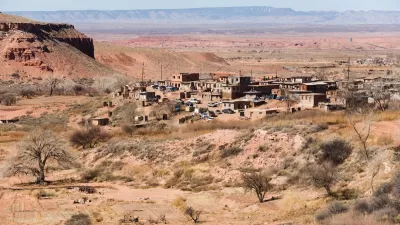Chris Haller parses the data in a recent report on Internet use for implications for how communities should manage their public outreach strategies.
The recent "Digital Differences" report from the Pew Internet Project contains a wealth of fascinating information on the ways in which different demographic segments of America's population access the internet. With a wealth of platforms used by community members to access the internet, a one-size-fits-all strategy for public outreach, such as simply developing a project website, may limit your potential pool of participants. As Haller notes, it is "important to consider other methods now gaining traction to
help you reach out to citizens in alternate ways to engage the citizens
of your community in the planning process."
Among some of the relevant findings on the report to consider when devising a public outreach plan:
- The rise of mobile is changing the story. Groups that have
traditionally been on the other side of the digital divide in basic
internet access are using wireless connections to go online.
- Email and search are today's most common Internet activities, but other
activities are becoming pervasive as well. Using social networking
sites, a pursuit once dominated by young adults, is now done by 65% of
Internet users- representing a majority of the total adult population. - The 27% of adults living with disability in the U.S. today are significantly less likely than adults without a disability to go online (54% vs. 81%).
- One in five American adults does not use the internet. Senior
citizens, those who prefer to take our interviews in Spanish rather than
English, adults with less than a high school education, and those
living in households earning less than $30,000 per year are the least
likely adults to have internet access.
FULL STORY: Digital Differences to Consider When Planning Your Public Outreach Strategy

Alabama: Trump Terminates Settlements for Black Communities Harmed By Raw Sewage
Trump deemed the landmark civil rights agreement “illegal DEI and environmental justice policy.”

Planetizen Federal Action Tracker
A weekly monitor of how Trump’s orders and actions are impacting planners and planning in America.

The 120 Year Old Tiny Home Villages That Sheltered San Francisco’s Earthquake Refugees
More than a century ago, San Francisco mobilized to house thousands of residents displaced by the 1906 earthquake. Could their strategy offer a model for the present?

Ken Jennings Launches Transit Web Series
The Jeopardy champ wants you to ride public transit.

BLM To Rescind Public Lands Rule
The change will downgrade conservation, once again putting federal land at risk for mining and other extractive uses.

Indy Neighborhood Group Builds Temporary Multi-Use Path
Community members, aided in part by funding from the city, repurposed a vehicle lane to create a protected bike and pedestrian path for the summer season.
Urban Design for Planners 1: Software Tools
This six-course series explores essential urban design concepts using open source software and equips planners with the tools they need to participate fully in the urban design process.
Planning for Universal Design
Learn the tools for implementing Universal Design in planning regulations.
Clanton & Associates, Inc.
Jessamine County Fiscal Court
Institute for Housing and Urban Development Studies (IHS)
City of Grandview
Harvard GSD Executive Education
Toledo-Lucas County Plan Commissions
Salt Lake City
NYU Wagner Graduate School of Public Service




























